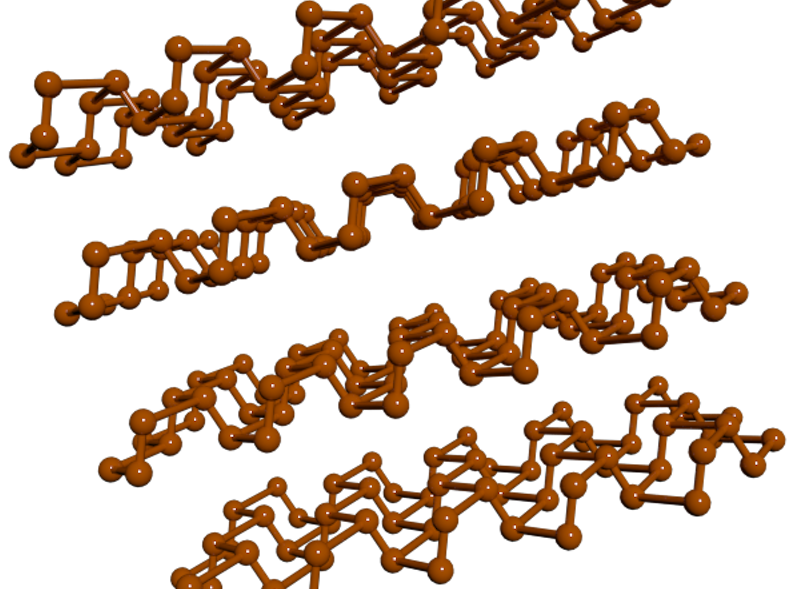Engineering a battery fast enough to make recharging like refueling

Enlarge / Layers of phosphorene sheets form black carbon. (credit: Wikimedia Commons)
Right now, electric vehicles are limited by the range that their batteries allow. That's because recharging the vehicles, even under ideal situations, can't be done as quickly as refueling an internal combustion vehicle. So far, most of the effort on extending the range has been focused on increasing a battery's capacity. But it could be just as effective to create a battery that can charge much more quickly, making a recharge as fast and simple as filling your tank.
There are no shortage of ideas about how this might be arranged, but a paper published earlier this week in Science suggests an unusual way that it might be accomplished: using a material called black phosphorus, which forms atom-thick sheets with lithium-sized channels in it. On its own, black phosphorus isn't a great material for batteries, but a Chinese-US team has figured out how to manipulate it so it works much better. Even if black phosphorus doesn't end up working out as a battery material, the paper provides some insight into the logic and process of developing batteries.
Paint it black
So, what is black phosphorus? The easiest way to understand it is by comparisons to graphite, a material that's already in use as an electrode for lithium-ion batteries. Graphite is a form of carbon that's just a large collection of graphene sheets layered on top of each other. Graphene, in turn, is a sheet formed by an enormous molecule formed by carbon atoms bonded to each other, with the carbons arranged in a hexagonal pattern. In the same way, black phosphorus is composed of many layered sheets of an atom-thick material called phosphorene.
Read 12 remaining paragraphs | Comments
https://ift.tt/3dtHkEp
from Ars Technica https://ift.tt/34J6Q4k

No comments